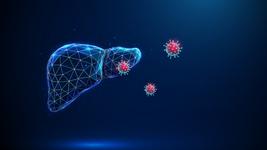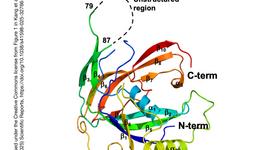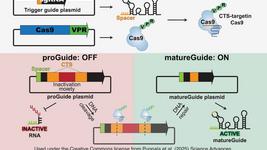CMN Weekly (31 January 2025) - Your Weekly CRISPR Medicine News
By: Karen O'Hanlon Cohrt - Jan. 31, 2025
Top picks
- Since 2019, we've been bringing CRISPR Medicine news and insights to our community and we want to make sure we're still focusing on what matters most to you, our readers. Have your say in our LinkedIn poll.
- From today, CRISPR therapy CASGEVY has been approved for use on the NHS in England by the National Institute for Health and Care Excellence. The treatment has been approved for use in older children and adults with a severe form of sickle cell disease. According to NHS data, there were just over 32,000 hospital admissions in England in 2023-24 for sickle cell disorders. Of these, almost 14,000 were admissions for sickle cell anaemia crises. A survey from the Sickle Cell Society found in the past 2 years, before the availability of CASGEVY, that a quarter of people with sickle cell disease had spent 1-2 weeks in hospital. CASGEVY will be offered at specialist NHS centres in London, Manchester and Birmingham, and follows a deal in August 2024 for the NHS to access CASGEVY for eligible patients with transfusion dependent beta-thalassaemia. Read more on that news here.
- According to an article in MIT Technology Review published earlier this week, mice with two fathers have been born—and have survived to adulthood—following a complex set of experiments by a team in China. The mice were created by Zhi-Kun Li at the Chinese Academy of Sciences in Beijing and colleagues, using a novel CRISPR-based approach to target genes that normally need to be inherited from both male and female parents. According to the article, the scientists hope to use the same approach to create primates with two dads.
Research
- In an article published in PNAS, scientists in Canada report a modular platform that uses a reaction known as Passerini to rapidly generate large, chemically diverse libraries of biodegradable ionisable lipids. By investigating the hydrogen-bonding potential between the lipid's head groups and the mRNA's ribose phosphate complex, they found that optimising the methylene units between the lipid's head groups and linkages could enhance endosomal escape and, consequently, mRNA delivery efficiencies. Leveraging this insight, they used the new platform to identify the biodegradable ionisable lipid A4B4-S3, which outperforms the current clinical benchmark, SM-102, in gene-editing efficacy in mouse liver following systemic administration and demonstrates the promise for repeat-dose protein replacement treatments.
- Researchers in the UK and United States have undertaken a study of the human genome's structural flexibility by using prime-editing technology to insert thousands of recombinase sites into repetitive DNA sequences. Their approach allowed them to create widespread genomic rearrangements in human cell lines, including deletions, inversions, and translocations across all chromosomes. The study revealed that cells can survive with significant genomic alterations, including megabase-scale deletions affecting multiple genes, as long as essential genes remain intact. On average, each cell carried more than 130 structural variants, although many combinations proved lethal. By analysing which variants survived over time, the team could identify patterns of genomic tolerance and discovered that gene expression was primarily affected by copy number changes rather than repositioning of genes through inversions or translocations. This research opens new possibilities for understanding genome function, drug resistance, and cellular optimisation, while potentially paving the way for engineering minimal mammalian genomes. The findings were published in today in Science.
- In an article published yesterday in Nature Communications, researchers in Australia, United States and China present a mouse model that constitutively expresses enhanced Acidaminococcus sp. Cas12a (enAsCas12a) with an mCherry reporter and demonstrate successful in vitro and in vivo gene editing. Using cells from the engineered mice, they achieved effective single- and multiplexed gene editing in various cell types, including reconstituting the blood system of normal mice using edited stem cells. The team created comprehensive knockout libraries, Scherzo and Menuetto, which target all genes in the genome. These proved effective across different screening approaches, including identifying genes crucial for lymphoma development. They also successfully combined CRISPR technologies by simultaneously performing gene knockout using Cas12a and gene activation using dCas9-SAM.
- Scientists in China report a regulatory mechanism for Lachnospiraceae bacterium Cas12a (LbCas12a) through direct repeat (DR) region 3' end modifications and de-modifications, which can regulate LbCas12a's cis- and trans-cleavage activities. They explored the effects of introducing phosphorylation, DNA, photo-cleavable linker, DNA modifications at the DR 3' end on LbCas12a's functionality and found that the temporary inhibitory function of Cas12a can be reactivated by DR 3' end modification corresponding substances, including alkaline phosphatase (ALP), immunoglobulin G (IgG), alpha-fetoprotein (AFP), DNA exonucleases, ultraviolet radiation, and DNA glycosylases, which greatly expand the scope of application of Cas12a. Their findings were recently published in Nucleic Acids Research.
- Blood transfusion is a crucial procedure in modern medicine, but blood shortages occur frequently. Ex vivo manufacturing of red blood cells (RBCs) from universal donor cells offers one potential solution but the high cost of recombinant cytokines needed to stimulate RBC production remains a barrier. Erythropoietin (EPO) signalling is crucial for RBC development, and EPO is among the most expensive media components. To address this challenge, scientists in the United States developed highly optimised small molecule-inducible synthetic EPO receptors (synEPORs) using design-build-test cycles and genome editing. By integrating synEPOR at the endogenous EPOR locus in O-negative induced pluripotent stem cells, they achieved equivalent erythroid differentiation, transcriptomic changes, and haemoglobin production using small molecules compared to EPO-supplemented cultures. Their findings were published in Nature Communications earlier this week.
- In an article published in International Journal of Pharmaceutics, scientists in China report attempts to enhance lipid nanoparticle (LNP)-based delivery by manipulating intrinsic regulatory mechanisms involved in their metabolism. The team reports that activation of the glucocorticoid pathway significantly increased the systemic delivery of LNP-mRNA in both mice and monkeys, achieving up to a fourfold improvement. They largely attribute this enhancement to the glucocorticoid-mediated inhibition of macrophage phagocytosis in circulation and the liver, which resulted in higher LNP accumulation in hepatocytes.
- Scientists at Eli Lilly in the United States report a systematic evaluation of chromatographic parameters to develop a highly selective ion-pairing reversed-phase chromatography separation for sgRNAs. They identified that stronger and more hydrophobic ion-pairing reagents promote the selectivity for long truncation impurities. Further, reduced flow rates and temperatures promote selectivity near the FLP. The findings, which were published yesterday in Analytical Chemistry, represent the first single-nucleotide resolution chromatography method for an sgRNA modality while employing a highly mass spectrometry-compatible mobile phase.
- In an article published in Molecular Therapy, a team in the United States presents a workflow for in vitro screening of potential therapeutic base-editing targets for the USH2A gene and empirically validate the efficiency of adenine and cytosine base editor/guide combinations for correcting 35 USH2A mutations. They compared editing efficiency and bystander edits between different target templates, and using different sequencing assays, and based on those findings they developed a humanised knock-in mouse model with the best-performing target, the nonsense mutation c.11864G>A p.(Trp3955*). Split-intein AAV9 delivery of editing reagents resulted in the restoration of USH2A protein and a correction rate of 65 ± 3% at the mutant base pair and of 52 ± 3% excluding bystander amino acid changes. The teams notes that this efficiency exceeds than that seen in a clinical-stage retinal gene-editing programme.
Industry
- Allogene Therapeutics announced this week that it has secured FDA IND clearance ALLO-329, an investigational allogeneic CAR T product being developed for the treatment of various autoimmune diseases. For full details, see the company's press release here. We also summarised the news in a clinical trial update here.
Detection
- In an article published yesterday in Communications Biology, researchers in Australia and Scotland present PathoGD, a bioinformatic pipeline for rapid and high-throughput design of recombinase polymerase amplification (RPA) primers and gRNAs for CRISPR-Cas12a-based pathogen detection. The pipeline is fully automated, leverages publicly available sequences and is scalable to large datasets, allowing rapid continuous monitoring and validation of primer/gRNA sets to ensure ongoing assay relevance. The team designed primers and gRNAs for five clinically-relevant bacterial pathogens and validated a subset of the designs to detect Streptococcus pyogenes and/or Neisseria gonorrhoeae in assays with and without pre-amplification. They report high specificity of primers and gRNAs designed, with minimal off-target signal observed for all combinations. They authors present PathoGD as an important new resource for assay design for current and emerging pathogens. PathoGD is available on GitHub at https://github.com/sjlow23/pathogd.
- A team in China reports a universal one-pot fluorescent assay for the detection of epidemic pathogens that can deliver results within 15-20 min. The method relies on heparin sodium to precisely tune the cis-cleavage capability of Cas12 via interference with the Cas12a-crRNA binding process, thereby generating significant fluorescence due to the accumulation of isothermal amplification products. They report that the universal assay accommodates both classic and suboptimal PAMs, as well as various Cas12a subtypes such as LbCas12a, AsCas12a, and AapCas12b. Their findings were published yesterday in Nature Communications.
Reviews
- Building the Future of Clinical Diagnostics: An Analysis of Potential Benefits and Current Barriers in CRISPR/Cas Diagnostics. This perspective paper discusses specific cases where CRISPR/Cas technology can surmount the challenges of existing diagnostic methods by stressing the significant role that CRISPR/Cas technology can play in revolutionising clinical diagnostics. The authors highlight the urgency and importance of addressing the technological and regulatory hurdles that must be overcome to harness CRISPR technology effectively in clinical laboratories.
- Intelligent Design of Lipid Nanoparticles for Enhanced Gene Therapeutics. This review highlights the dynamic evolution of lipid nanoparticle technology, which is expected to drive transformative progress in the development of gene- and gene-editing therapies.
- Exosome-mediated CRISPR/Cas delivery: A cutting-edge frontier in cancer gene therapy. The authors of this review highlight the role of exosomes and the CRISPR-Cas system in cancer research, exosome-based CRISPR delivery for cancer treatment, and its future orientation.
News from CRISPR Medicine News
- Scientists in Denmark have developed a method that allows for simultaneous activation, repression, and knockout of genes within a single cell. By leveraging orthogonal CRISPR/Cas systems, the team has demonstrated the potential of advanced CRISPR technologies for innovative applications in gene therapy and regenerative medicine. Read more about that in our latest interview published on Monday.
- Earlier this week, our sister publication CARBON shared its latest newsletter, bringing you the latest in CRISPR AgroBio news. Check it out here.
- The FDA has cleared Allogene Therapeutics' IND application for ALLO-329, a novel dual-targeting CAR T cell therapy designed to treat multiple autoimmune diseases by simultaneously depleting both B cells and activated T cells. The Phase 1 RESOLUTION trial, set to begin in mid-2025, will evaluate this first-of-its-kind therapy in patients with lupus, inflammatory myopathies, and systemic sclerosis. Read more in this week's clinical trial update here.
To get more CRISPR Medicine News delivered to your inbox, sign up to the free weekly CMN Newsletter here.
Tags
ArticleMissing linksNewsCMN WeeklyAllogene Therapeutics, Inc.
CLINICAL TRIALS
IND Enabling
Phase I
Phase II
Phase III
Gastric Cancer and Colorectal Cancer, CRC, (NCT07166263)
Sponsors:
Base Therapeutics (Shanghai) Co., Ltd.
Sponsors:
Base Therapeutics (Shanghai) Co., Ltd.
IND Enabling
Phase I
Phase II
Phase III
Relapsed or Refractory Acute Myeloid Leukemia, AML, (NCT06541444)
Sponsors:
Base Therapeutics (Shanghai) Co., Ltd.
Sponsors:
Base Therapeutics (Shanghai) Co., Ltd.
IND Enabling
Phase I
Phase II
Phase III







